Standing at the rim of the Verdon Gorge in southern France, Alan Carne rigged his rappel. He pushed two rope strands through a small metal rappel device, and clipped it to a pear-shaped carabiner on his harness. The wiry British rock climber stepped over the precipice and lowered himself into the wind. So steep, tall and magnificent are the walls of this Provencal gorge, often compared to the Grand Canyon, that it was a 1,500-foot straight shot between Alan and the Verdon River, twisting below.
“I was totally at ease in the Gorge,” Alan said. “The exposure and verticality of the place didn’t really register in my brain. Felt as normal as walking around a street. I was really excited that day, too, and just crazy-psyched to climb.”
This day was in 1996, two weeks shy of Alan’s 36th birthday.
What proceeded was a series of rather unusual mishaps. They are honestly too complex to bother explaining, but they involved a tangled rope, with Alan improvising a way to free it. Next thing Alan knew, he had accidentally rappelled off the end of his rope.
Suddenly he was in free fall.
Alan remembers quite vividly that just before the end of the rope slipped through his hand, he heard his climbing partner, Emil Mandyscwsky, call out to warn him. But it was too late.
Emil is an Australian who was then on an extended climbing trip through Europe. He and Alan had connected on a forum a few days earlier; the two had only just met in person that morning. Emil was turning 21 the next day.
Because Emil had rappelled first, without incident, he was actually hanging from an anchor below the point where Alan fell.
Alan accelerated down through the air—20, 30, 40 feet. The sheer blue-gray limestone became a blur as he whizzed past. He instinctively flipped around like a cat. The entire Gorge spread out below him in undulating palettes of turquoise, gray and blue.
Emil opened his arms, gritted his teeth, and tried to catch Alan. The collision knocked the wind out of Emil, but momentarily slowed Alan’s fall. Each desperately tried to grab hold of the other, but neither one could latch on.
Once again, Alan was resigned to gravity. He fell another 10 feet. His legs impacted a protruding rock flake, shattering his right ankle.
“Adrenaline kicked in,” Alan says, “and I grabbed hold of the flake so hard that I threw my back and shoulder out.”
Try to really picture this happening to you. What would you even do?
“I climbed a few moves back up to reach Emil,” says Alan, “And he clipped me into the anchor. We sat there for the next 20 minutes, freaking out and hyperventilating as I looked at my broken ankle that had swelled up like a balloon.”
With no way to signal a rescue, and no other good options at hand, Emil led the two back to horizontal ground on the rim of the Gorge. Alan followed, climbing out on just one leg.
“Over the next three months,” says Alan, “I was completely traumatized with flashbacks, depression and the thought that I might never be able to climb again.
“As I went through the process of rehabilitation, however, a curious thing happened. That depression turned to incredible joy as I realized I’d been given a second chance to recover and continue doing what I love most.”
Today, Alan is in his late 50s and he climbs in the Verdon Gorge as often as five days per week during the prime seasons of spring and fall. It’s what he has been doing since he first hitchhiked here from Manchester, England, in 1979 as an 18-year-old kid.
When our team of American climbers arrived at this geographically stunning location that is credited with being a birthplace of sport climbing, and we all stood at the precipice of this big blue chasm and looked down upon its legendary rock and felt that queasy excitement that’s part utter fear and part sheer wonder, it was Alan who arrived to meet us, wide-eyed and bursting to show us around a place that once nearly killed him; a place he loves most.
“Would anyone like to climb?” Alan asked. “I’m crazy-psyched to climb today.”
Climbing is a beautiful sport—an art form that imitates life.
The story about rock climbing today is that it’s more than just an activity; it’s a response to many modern dilemmas, from digital detoxification to the extreme self-reliance one learns up in the vertical world, a self-reliance that’s balanced by the sacred bond of the rope: the ultimate trust of putting your own life in another partner’s hands.
Climbing is not strictly about travel, exploration and pushing limits (though it is about those things, for sure). Climbing has become a passion-based framework or context in which its participants can find deep meaning in the utterly meaningless. The sheer absurdity that is climbing rocks for fun.
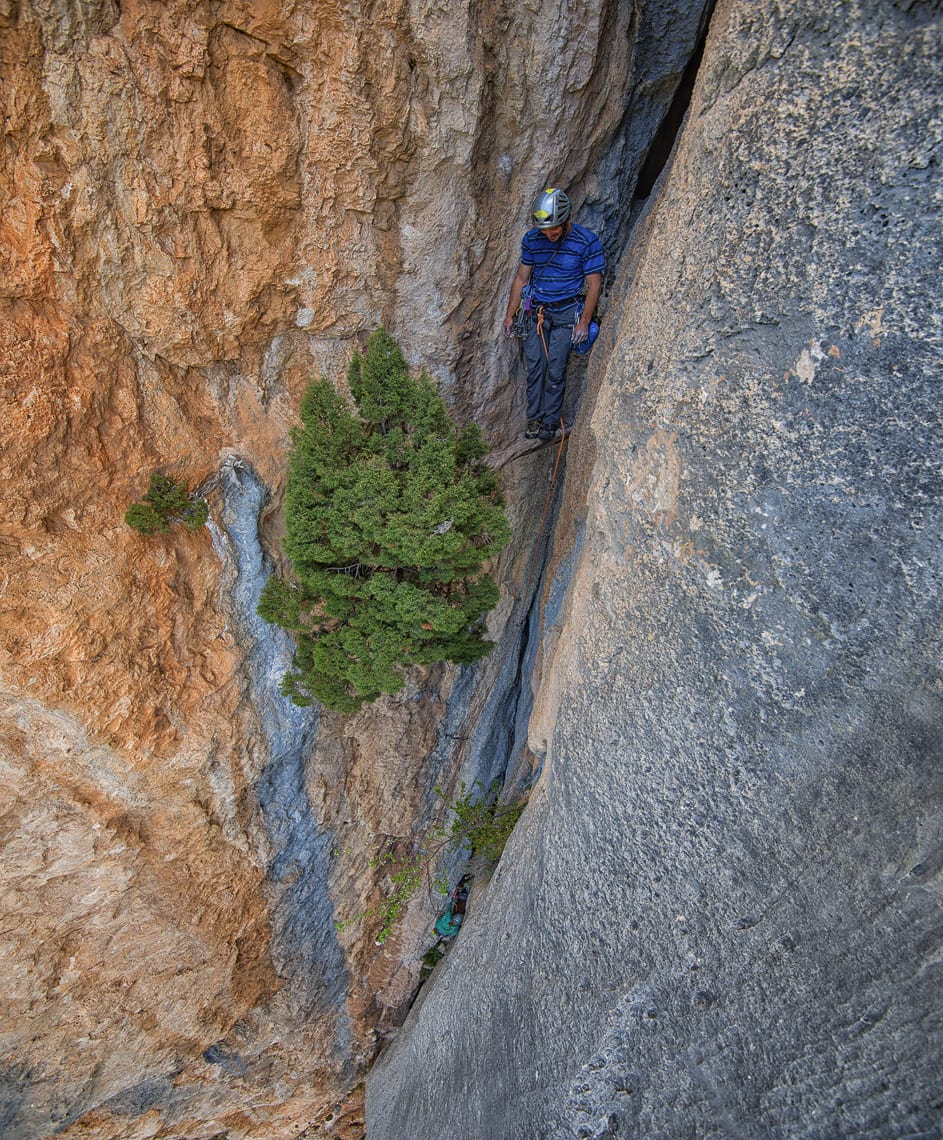
Emily Harrington and Matt Segal, two professional American rock climbers and my travel companions, have always dreamed of traveling to the Verdon. It only takes seeing one photo of these beautiful, aesthetic slabs of rock, which look like painted canvases and studies in the blue, to stoke out most climbers and make them want to be there, climbing that.
Emily and Matt were also keen to visit the Verdon to pay respect to the visionaries of the 1960s, 1970s and 1980s who were climbing before climbing-shoe rubber was actually sticky; before there were indoor gyms in which to train; and before there was anything, really, of any parallel anywhere else in the world.
Both Emily and Matt discovered climbing indoors as kids. Emily was raised in Boulder, Colorado, the climbing epicenter of the U.S. Growing up, she had access to a network of the best indoor gyms and coaches in the country. As someone who immediately started doing well in local competitions in a town where many outdoor companies are based, Emily was sponsored virtually the day she started climbing at age 10.
Matt, however, grew up in Miami, Florida, about as far away from outdoor rock climbing as it gets. But he discovered the sport at a local gym when he was 10.
Emily and Matt met as junior climbers on the national comp-climbing circuit, and became friends as teenagers. Separately, they both made names of themselves in the climbing world by pushing their limits in competitions, sport climbing and bouldering. Eventually both earned the same sponsor, The North Face, which has given them an excuse to travel together today as climbing partners.
In recent years, Matt and Emily have made efforts to expand their vertical interests into much riskier activities, such as trad climbing and mountaineering. Matt, for example, has established some of the hardest and boldest trad climbs (no bolts) in the U.S., while Emily has taken to high-altitude mountaineering, with ascents of Mount Everest and Ama Dablam. She met her boyfriend, Adrian Ballinger, on the slopes of Everest.
Yet here in the Verdon, at least at first, Matt and Emily, two very experienced climbers, seemed to struggle to wrap their heads around the intimidating nature of this canyon with its tough old-school rock climbing, complex descents and tricky route-finding.
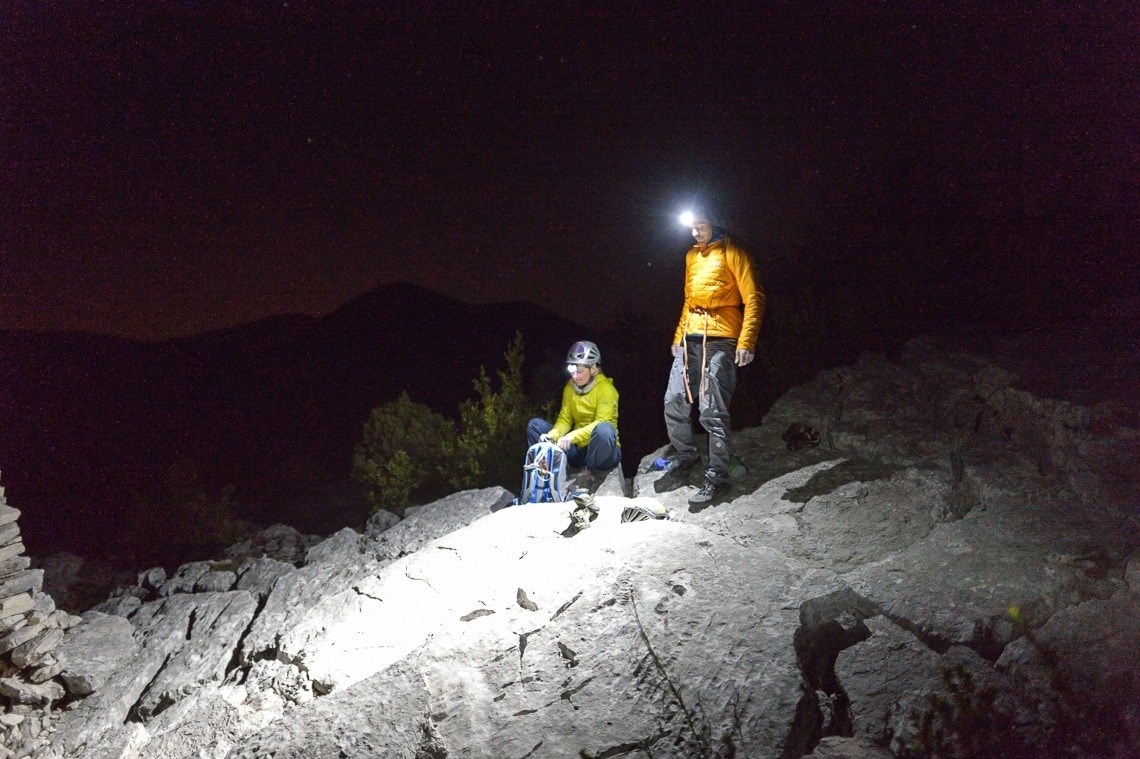
“We got totally lost today,” Emily said, throwing her pack down on the tiled floor of our rental home in the nearby town of Aiguines.
“Yep, you might say we epic’d,” said Matt, cackling with his usual laugh.
The goal of their trip was to begin with the old classic climbs and work their way up to the harder, newer ones in order to gain a full appreciation for how the climbing here in the Verdon has evolved and progressed.
But first, it seems, they would have to actually find the routes.
At the nadir of the 13-mile Verdon Gorge, Europe’s deepest chasm, is the Verdon river, a tributary of the Durance. Though now dam-tamed and diminished from its original Alps-fed volume by over a hundredfold, the Verdon retains its distinctive milky green (vert) namesake color, the result of dissolved limestone mixing with microscopic flora. A protected regional park of Haute-Provence, les Gorges du Verdon attracts a diverse population of tourists, bikers, hikers, kayakers and adventurers.
But the Verdon is perhaps best known as a climbing destination—and one of the birthplaces of sport climbing. By the mid-1980s, the Verdon was the world’s first prominent climbing area to feature, almost entirely, all-bolted routes. The use of bolts enraged the old guard in the climbing world, but it also opened up vast new swaths of much more difficult terrain for climbers to explore and push the limits of what human beings are capable of climbing.
This sport climbing approach was emulated around the world, raising standards overall and helping to introduce climbing to a wider population. Today sport climbing has gone from being viewed as a travesty of more traditional forms of rock climbing and mountaineering, to becoming perhaps the most popular climbing discipline of all.
A loop road winds in tight, stomach-churning switchbacks around the Gorge, traversing the most unlikely precipices beneath spring-fed waterfalls. Along this roadway are Medieval-era villages, former defensive settlements that are perched like eagle nests (village perchée) above the valley as a way of once offering people high points of refuge from the waves of plague and warfare that ravaged this region during the Middle Ages. Today the villages are inhabited by farmers, artisans, and shopkeepers who peddle local delicacies, from absinthe to herb-crusted chevre to dozens of lavender products, including honey, which are made from the surrounding flower crops that explode bright purple each May and June.
Belvederes, the road-side lookouts, offer visitors scenic views of the 2,000-foot drop. Often they are quite crowded with tourists pressed up against the railings, catatonic with vertigo and reanimated only by the occasional sighting a griffon vulture, riding thermals in lazy circles beneath them. This large bird, with its 14-foot wingspan, nearly went extinct but has made a strong comeback locally. Last count, upwards of 60 vultures are nesting here, commanding an unrivaled dominion over an ethereal kingdom.
The vultures have been known to occasionally raze climbers mid-route with sudden flybys that must feel like being dive-bombed by a vampire, sending at least a few individuals keeling right off the rock.
Rock climbers are the other spectacle for gawkers at the belvederes. To see a figure in the middle of one of these great cliffs, as tiny as a fly and moving incrementally upward, gives fantastic context to the size of the gorge itself, but yields strikingly few clues to the nuanced and incredible feat that’s actually taking place by that focused individual.
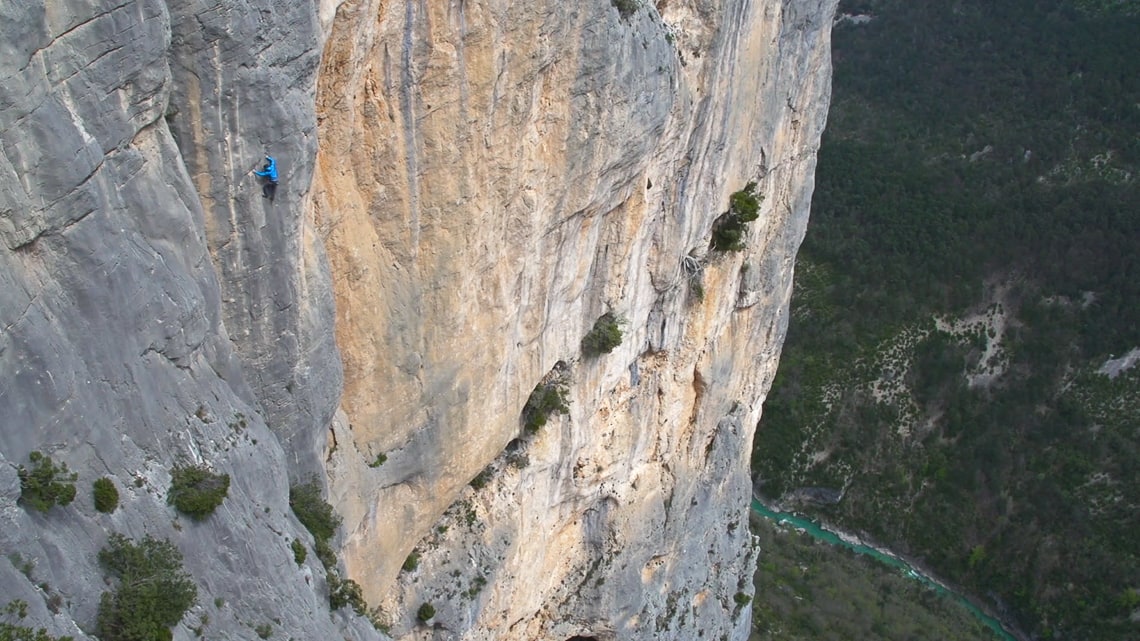
The Verdon is renowned for its aesthetic, chemically-pure limestone—150 million years in the making—that has high concentrations of calcium carbonate and nearly no clay impurities. The underlying limestone is bone-white, but the walls more often present themselves as blue-gray due to calcium ions that have migrated toward the surface and formed a patina armor that is highly resistant to erosion. Totally bomber rock.
From a distance, the slabs appear impossibly blank. The famous alpinist from Marseilles, Georges Livanos (1923-2004), who climbed many significant routes throughout the Alps in the 1940s and ‘50s, is said to have been the first climber to visit the Verdon. Yet when Livanos passed through the Gorge by foot and looked up to inspect the walls, he furrowed his eyebrows and dismissed the entire area for being cursed with wretched, blank rock that would never be climbed. Not by anyone. Not in a million years.
Over the last 40some years, however, during which hundreds of routes have been climbed here, we now know that these walls are positively riddled with hand and footholds of anthropomorphic distances to each other. There are the shallowest little divots to use as footholds, and the most unlikely ripples that are just big enough to curl your fingertips upon. There are also the “goutte d’eau”—eroded pockets formed by water droplets, which range in size from something that could only accept a single ring finger, to big enough to wrap both of your hands around. Each of the Verdon’s hundreds of routes, which range from 50 to 1,500 feet long, offer a unique free-climbing puzzle, with various permutations of hold shapes, sizes and movements of all levels of difficulty.
Standing at a belvedere, watching your friends climb, invites conversations with uninhibited tourists, who struggle to wrap their heads around what they’re seeing.
You end up explaining a lot. “Free climbing” really just means you are relying on your hands and feet to climb a wall; gear, such as ropes and carabiners, are used in free climbing for protection in the event of a fall, but are strictly not used to help make upward progress. This is different from “free soloing,” you’ll say, which means free climbing a tall route without the safety of a rope or gear.)
Oftentimes, free climbing is like an improvisational dance routine. Or something like slow gymnastics. It’s about discovering the hand and footholds that form naturally in the rock, and then choosing—often in less than a split second lest you fall—a correct sequence of movements that produce a sequence of upward progression.
Knowing how to trust your feet, which are clad in sticky-rubber-soled shoes, on the shallowest indentations is part of it. Managing the lactic acid building up in your forearms—by holding on with only the minimal amount of energy you need to keep yourself attached to the wall and precisely no more than that—is another part.
Distributing your body weight between the four points of contact that are your hands and feet, and maintaining a perfect balance between these constantly moving appendages, is yet another crucial element.
On top of all that, it helps to have fingers as strong as vice grips, an iron core, the flexibility of a sapling, and virtually no body fat at all.
But if you’re a spectator perched at a belvedere, it’s best to just forget all of these details—because, like watching the ballet, it may be best to relax from the comfort of your position on horizontal ground and simply look down, as the case may be so uniquely here in the Verdon Gorge, and enjoy watching an expert climber’s flowing vertical dance that looks almost effortless.
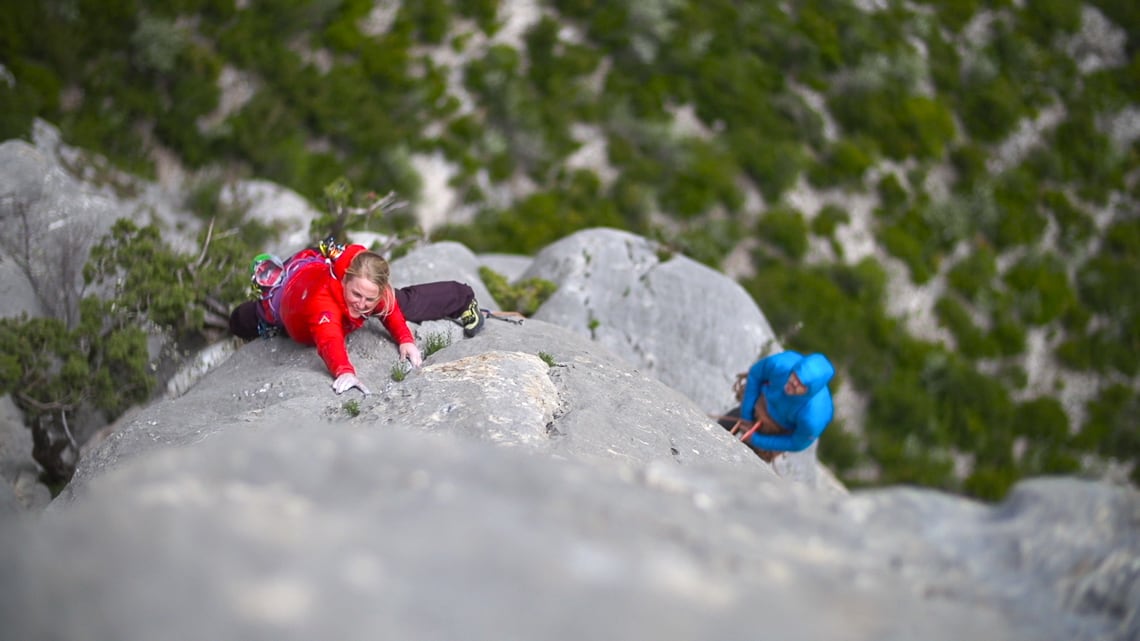
The parallels between dance and climbing end, however, when we examine the disparate characters attracted to each pursuit. Climbing as a culture and lifestyle has always called out to folks with personalities as grand and rowdy as the rocks they scale. Dirtbags, scoundrels and other unseemly rule-breakers comprise the forefathers of this sport—traits continue on in climbing’s gene pool.
So when you see a climber dangling in some horrifying spot, and you think to yourself, “That person is crazy!” you are almost certainly correct that he or she is.
But crazy in a different way than you might have meant. Crazy enough to have sought out a different life path than the usual 9 to 5. Crazy enough to be addicted not to adrenaline, nor to material items, but to the sense of purpose and reason for being that any lifestyle-passion instills. Crazy enough to live simply in order to maximize resources needed to travel and explore. And above all, crazy about attaining those rare, ethereal moments of perfection, when you are lighter than air and move up the rock with effortless flow.
Emily, Matt, Alan and I teetered along the rim, placing our feet extra carefully and looking for the set of bolted anchors that indicated our intended rappel station.
“I think the rap anchors are here,” Matt called out. “I found them! … I think?”
Upon our arrival, we quickly discovered that it helps to have a knowledgeable local such as Alan pointing you in the right direction and showing you where to descend into the gorge. Otherwise you might easily rappel down the wrong route and find yourself stuck in the middle of 1,000-foot cliff.
That you generally approach each climb from the top is one of the more unique characteristic of the Verdon’s climbing experience. Because the walls are so steep, you often can’t exactly see what’s beneath you. Over the years, climbers have installed plaques at the top of the most popular rock climbs to indicate your location. Finding one of these plaques is a bit of an egg hunt, and when you arrive at the spot you’re looking for, a feeling of accomplishment for having found the day’s route quickly yields to the anxiety that you now have to go down.
There are no rescues here. No cell phones. No rescue service. Even if someone happened to be walking above your route, they wouldn’t be able to hear you yelling. And as tough as the climbing itself may be, it would certainly be much more difficult to continue descending all the way to the base of the gorge and now face miles of bushwhacking alongside a capricious, high-volume river to reach an exit point.
Danger exists not just below you in the form of an airy abyss, but also above. Storms move in quickly from the north thanks to the howling Mistral jet stream, a legendary wind known to have driven men mad throughout the ages. Because most of the climbing is located on south-facing walls, climbers rarely see the dark thunder clouds approaching until—bam!—the storm is right on top of you. Being struck by lightening is one of the most common causes of death here.
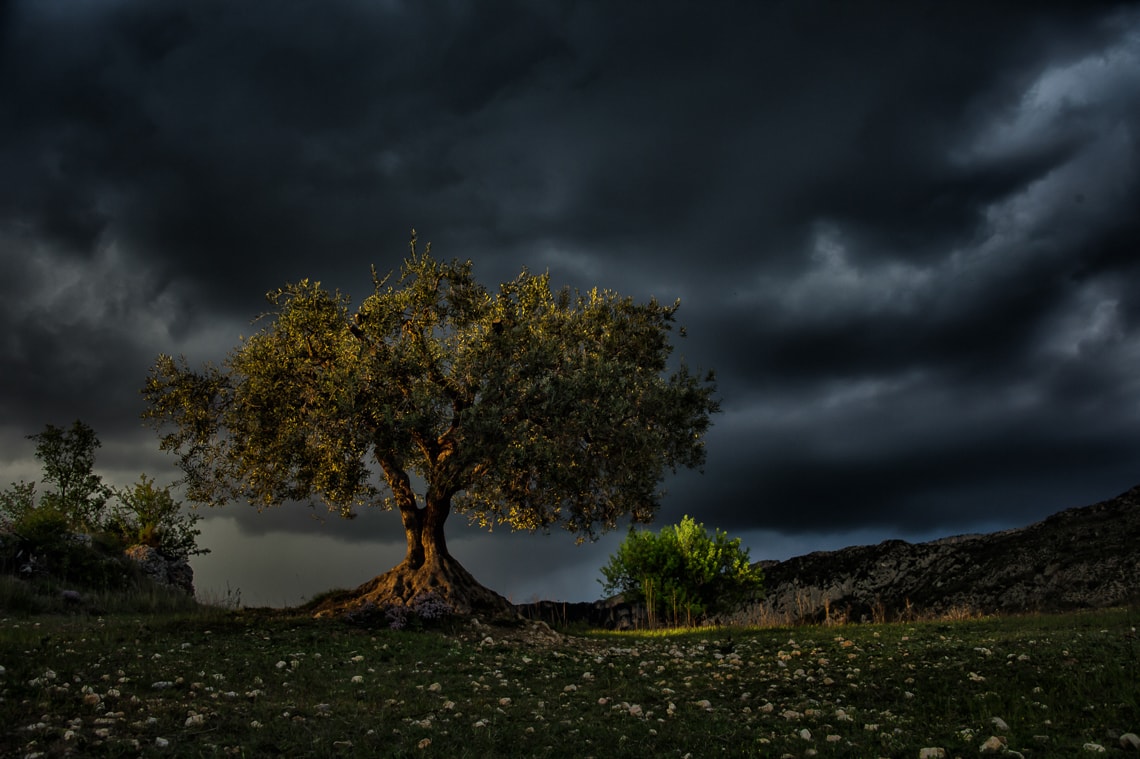
Descending via rappel is quite committing. Rappel as far as you dare, pull your ropes down with you—your tether and lifeline to the top—and now you will find yourself absolutely committed to climbing back out.
It didn’t used to be this way, however. The first climbers to visit the Verdon abided by the traditional rules of the sport: that you begin from the ground and climb up. These early pioneers were alpinists from Chamonix who were looking for a challenge during the times when the big mountains were swallowed by storms. Though Georges Livanos had famously returned to Chamonix with reports that the Verdon was too steep and too blank to ever be climbed, a new generation of mountaineers—stronger, more talented and armed with new vision—had congregated in the mountain town, just a couple of hours north.
François Guillot, a climber from Marseilles who would end up becoming one of the most important figures in the Verdon, led this new crop of French alpinists that included Maxime André, Claude Cassin, Marc Chabert, Gilles Gohen, and Bernard Domenech. Bored by waiting out the storm cycles in Chamonix, this band of climbers stumbled out of the Chamonix bars and headed south.
“Our approach back then was aimed more at alpinism,” says Guillot, who is now 70 years old, fitter than most 40 year olds, and lives in la Palud sur Verdon, a five-minute drive to the climbing.
“We would go rock climbing in the Calanques in the winter, but our objective was to go to the Alps to do big ascents as alpinists. At the time the Verdon was still not considered to be climbable.”
When Guillot and friends decided to explore the climbing potential in the Verdon, during the years 1963-1967, they would typically spend a weekend establishing new routes on the easier, shorter cliffs located on the outskirts of the main gorge. They slept in caves at night, and named their routes in the spirit of their states of mind: le Mouton saoul (the drunk sheep), le Boeuf beurré (the boozy beef), and les Écureuils alcooliques (the alcoholic squirrels).
They called themselves “les fous du Verdon”—the fools of the Verdon.
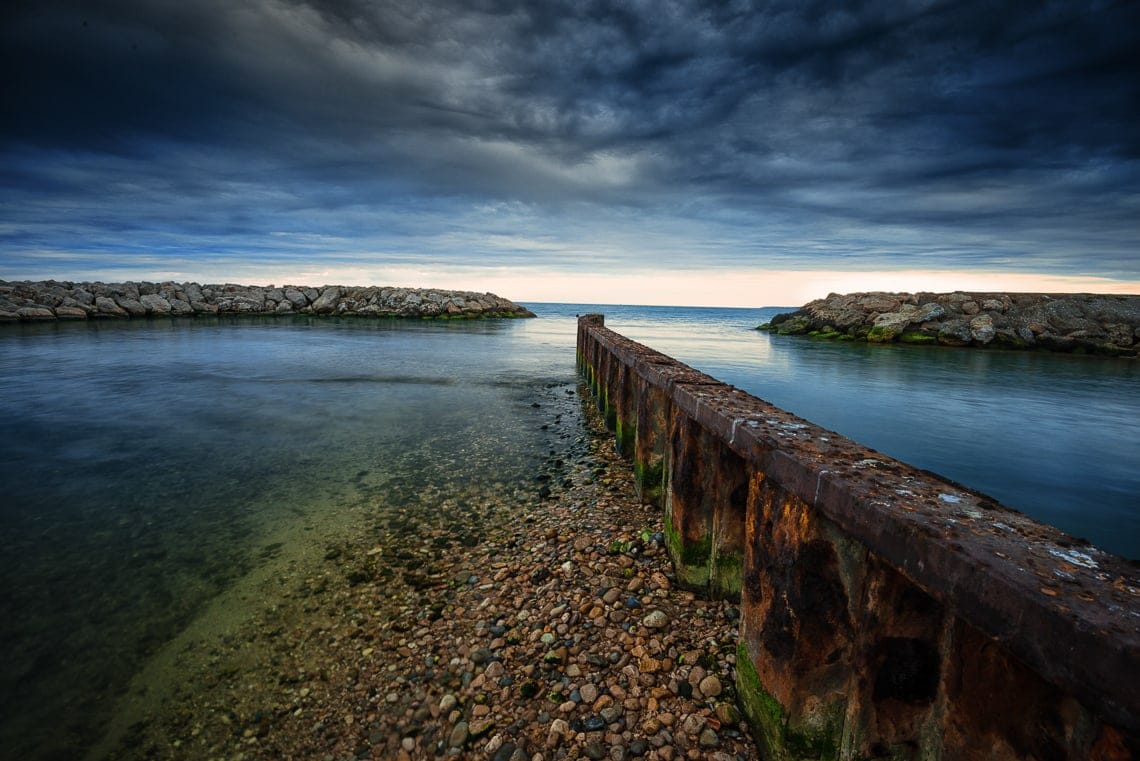
Today it’s quite common to give climbing routes these types of creative names. However, in the 1950s and 1960s this was a new trend—one that was indicative of a greater metamorphosis occurring both in climbing and society.
Traditionally, climbing routes were named either for their aspect—“the North Face of the Eiger”—or after the first ascentionist: “the Bonatti Pillar,” for example, named after Walter Bonatti.
Mountaineering began in the European Alps around the mid 19th Century, with conquests made of the most prominent snow-capped mountains such as the Matterhorn, Mont Blanc and the Eiger. Climbing expeditions to these peaks—and eventually, to others in the Himalaya and elsewhere—were typically sponsored by European governments. Ascents were completed strictly for nationalistic purposes.
The idea that climbing might be an individualistic, not nationalistic, endeavor only began to emerge in the aftermath of the second War—a shift that somehow parallels a larger trend that was sweeping throughout society as a whole.
National pride and duty were being replaced by individual desire: to foster passion and explore personal limits.
Also, most of the big mountains in the Alps had already been climbed. Almost by default, the only true glory that remained in the climbing world was that of pushing through your own limits and conquering your own personal summits, not those for your nation.
Finally, thanks to post-World War II inventions such as carabiners and nylon ropes, climbing was becoming significantly safer. Subsequently climbers were able to push themselves harder without facing necessarily grave consequences.
The social revolution of May 1968 in France was a volatile period of social change that furthered these individualistic ideals, and resulted other great upheaval of many traditional values and institutions. The economy came to a halt. “Everything was at a standstill. The economy was frozen because of the ’68 revolution,” says Guillot. “We couldn’t get to the mountains because we didn’t have enough money for gas. But we could get to the Verdon. … At this point, there still wasn’t a single piton in the whole Gorge.”
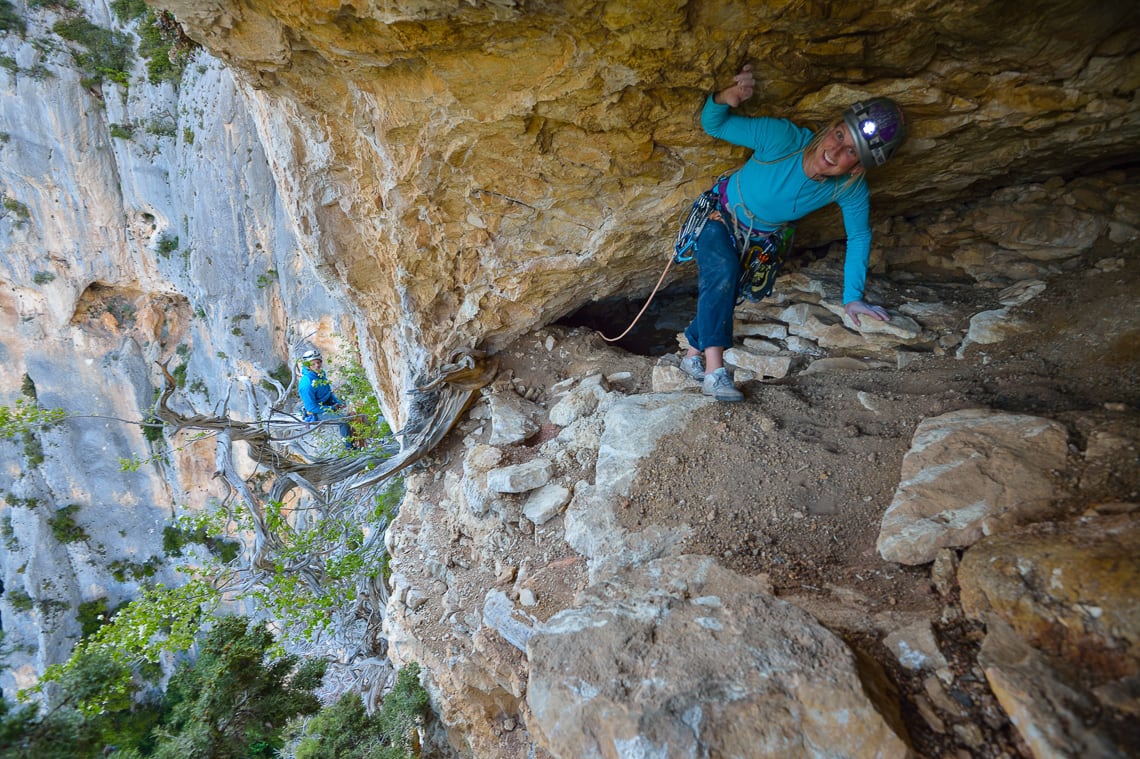
One weekend that May of 1968, Guillot and his friend Joel Cöqueugniot entered the Gorge with the goal of finally climbing to the top of the tallest cliff in the Verdon. They walked the base and looked for any weaknesses in the rock—the vertical cracks—that would provide an obvious upward passageway. They found a 1,200-foot tall cleavage that formed a great chimney in the wall. A rare crack system that ran from the canyon floor straight to the summit.
With nothing more than a few pitons, a hammer and a rope, François and Joel began climbing on a Saturday morning. By Sunday evening, having slept in a little nook, the two friends emerged victorious on the canyon rim. The blank cliffs of the Verdon Gorge were climbable after all.
There was little time to celebrate, however. Despite having just completed one of the most important first ascents in French climbing history, François had to rush home to Marseille for an important rendezvous the next day: He was scheduled to meet the father of a girl, Chantal, who he had just started dating.
Joel teased François about the fact that the subject of marriage was inevitably going to come up. As a joke, they decided to name their new route “La Demande,” which means “the proposal.”
La Demande was the first major free climb in the Verdon, and it kicked off a golden age of exploration in the gorge that lasted for 10 years as more climbers came from around Europe to test themselves on the crack climbs like La Demande.
Since its first ascent in 1968, La Demande has become much safer. Guidebooks now provide topographical information about each pitch. And bolted anchors have since been installed for convenience.
But for Emily and Matt, this historic route still provided a full day of adventure. Halfway up the wall Matt accidentally dropped his climbing shoe, forcing him to complete the remaining pitches in his sneakers—a similar style of inadequate footwear that François and Joel may have worn over 46 years earlier, at a time when climbing equipment was so crude it was all but nonexistent.
“I have a full respect for that route now,” Matt said, after reaching the top. “That was awesome.”
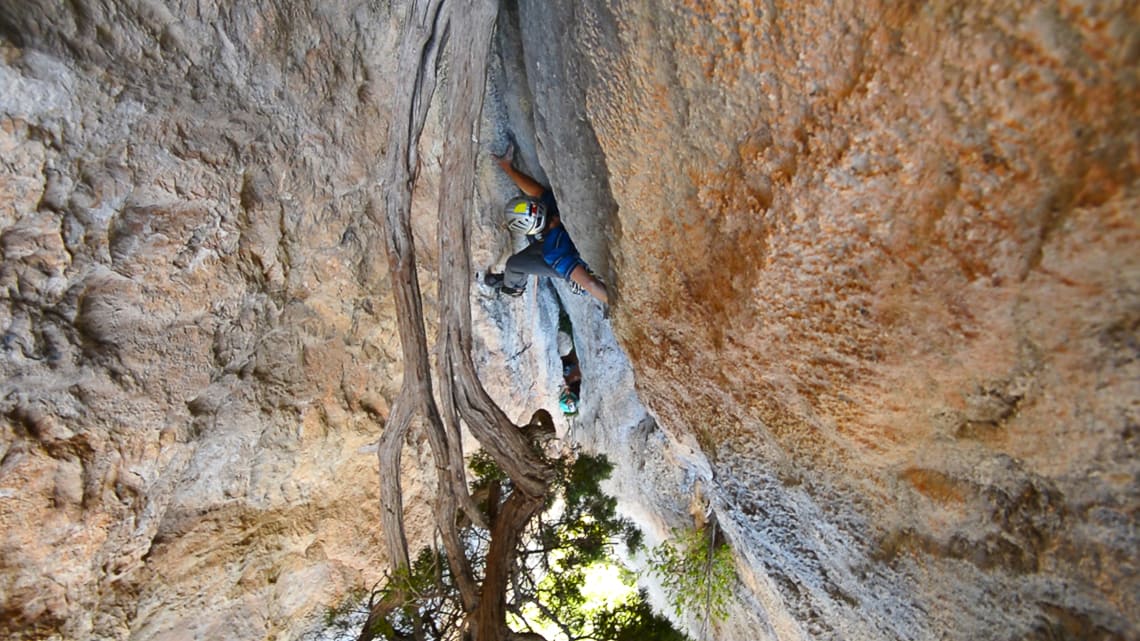
François’s meeting with the father that day in 1968 went well. And of course, his fling with Chantal got serious and, a year later, he actually proposed. Since then, Francois has made a point of trying to climb La Demande every year. In 2008, to celebrate the route’s 40th anniversary, he and Chantal climbed La Demande together. The two were greeted on top by 50 friends, each with a bottle of champagne.
The focus of this golden age of Verdon climbing exploration, from 1968 to 1978, was virtually limited to the vertical cracks bisecting the great walls. The swaths of blank rock located in between the cracks, however, largely remained untouched as climbers didn’t have the tools or audacity to explore them.
Part of the problem was that to venture out onto one of these immaculate blue faces on lead was extremely intimidating as there were no cracks to place protection (cams, nuts, pitons, etc.). You’d have no idea of knowing whether the holds would just peter out and leave you stranded amid a blank wall, facing either a horrifying down-climb retreat or taking a potential death fall.
In the spring of 1976, Stéphane Troussier and Christian Guyomar had had enough of wondering what mysterious challenges might lie on the dalles—those blank faces between the cracks. They decided to explore them by rappelling down from the top.
This may seem like a perfectly logical solution in an area where anyone can easily drive to the top of the cliff and rappel down at any given point. However, it’s important to understand what a groundbreaking departure from climbing’s traditional roots this “top-down” approach represented. Many climbers viewed this pre-inspection to be totally anathema to adventure. It removed much of the risk by helping to eliminate the uncertainty of what lay ahead.
On the other side, proponents of the top-down approach were less interested in abiding by the traditional dogma that stated that all climbing must begin from the ground, which they viewed as limiting their ability to establish more new routes to climb. Besides, that rule may have a necessary place at other climbing locations, but it seemed arbitrary in a canyon where you can easily drive to top.
Most important, these climbers were motivated to climb new routes of increasing difficulty on the blank walls in between the cracks.
All that untouched rock, right there, was the future.
Jacques Perrier was one climber who played an important role in creating the systems future climbers would use to equip new routes on rappel with bolts. He would rappel down, discover where the holds naturally led, and then place bolts along the entire length of this line. His most well-known route, Pichenibule, was one of the first sport climbs in the world.
When Emily and Matt went for their ascent of Pichenibule, they spent two days rappelling down wrong sections of the cliff and climbing other routes. “Fully epic!” Matt said again, cackling with laughter.
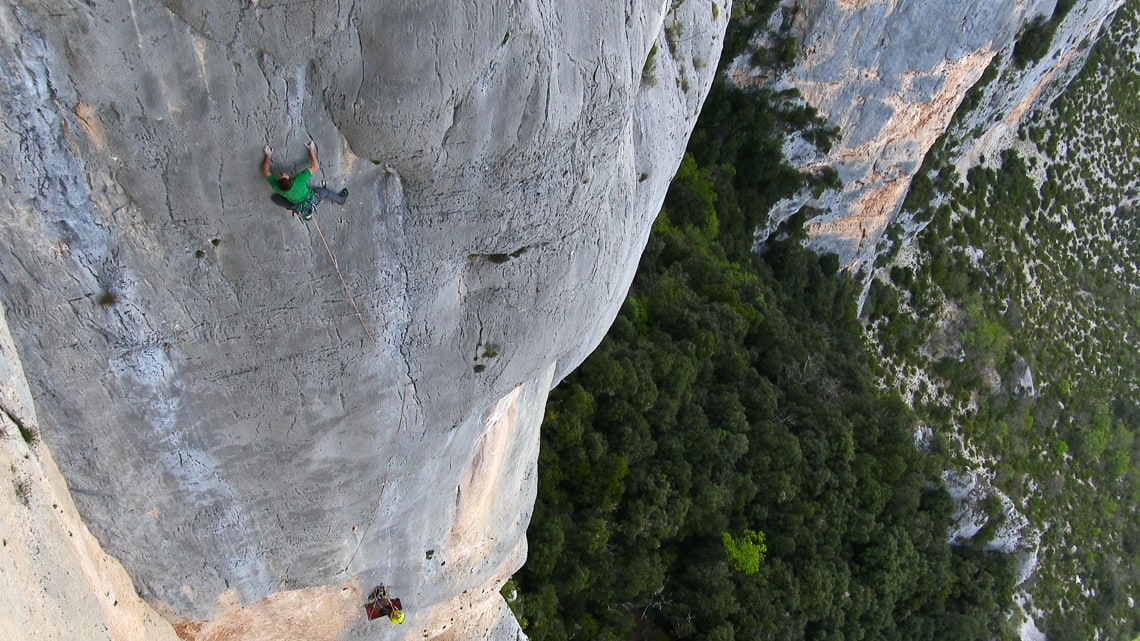
When they finally found the route, it took them a few tries to free climb one of the toughest sections, once again instilling a deep respect for this route that was climbed a few years before either were born.
Pre-placed expansion bolts are considered to the be the safest form of climbing protection as each bolt is rated to well over 5,000 pounds. The first ascentionist chooses where and how often to place the bolts, which demands a certain artistry. Just as there are “good” and “bad” artists, there are good and bad first ascentionists, subjectively speaking, of course. Those who are widely considered great, though, are often the ones who have both the vision to see the best routes and the deftness to place the appropriate number of bolts so that the climbing is relatively safe, yet still feels exciting and adventurous.
In the Verdon the bolts are characteristically spread farther apart than they are at other sport-climbing areas, anywhere from 10 to 30 feet. This means that climbing from one bolt to another involves risking long falls. You probably won’t die, but you might shatter an ankle or break a wrist.
As a climber, the specter of enduring one of these fearsome falls (“whippers”) can grow in your mind with each and every move higher that you climb above your last bolt. Maintaining a cool head and executing your climbing performance as well as possible is one part of the mental challenge, and one aspect that makes the climbing in the Verdon so engaging.
From 1976 to 1988, it’s no exaggeration to say that the rock climbing world was truly torn by an extremely heated polemic over sport climbing. How should bolts be placed: ground up or top-down?
These internecine debates among climbers carried out not just in the Verdon, but at every major climbing area around the world, particularly Yosemite.
Each region was different, though, based on geology and geography. The rock in Yosemite, for example, is made of glacial-polished granite and there often are no holds between the cracks. Further, unlike in the Verdon, there are no easy roads leading to the top of Yosemite’s most major walls. In Yosemite, ground-up climbing with fewer bolt placements became de rigueur.
Every climbing area, however, had its faction of traditionalists who believed that climbing new routes should be done ground-up, with ideally no bolts (or at least a minimum) placed. And every climbing area had its faction of new-school climbers, who saw what was going on in the Verdon and employed those same top-down tactics to their own cliffs.
As each side tried to reconcile its point of view over how the sport should be “played,” the rift between the two groups became so great that the only solution was to designate entirely separate genres: sport climbing and traditional (“trad”) climbing.
The French were quickly becoming the strongest, fittest, best climbers in the world
The Hilti cordless hammer drill came on the scene sometime around 1983, and became an important catalyst to sport-climbing’s development. This single invention, perhaps, has influenced rock climbing more than any other piece of equipment because it resulted in an exponential explosion of new routes around the world. Whereas before climbers were forced to drill bolts by hand—a time-consuming process that takes upwards of 45 minutes per bolt—climbers could now place bolts within a couple of minutes. This meant not only more new routes, but more bolts placed per route.
The traditionalists bemoaned the direction that climbing was taking, but the results were irrefutable: free-climbing levels were going up. There were more rock climbs to enjoy. And the French climbers, those who had embraced sport climbing, were quickly becoming the strongest, fittest, best climbers in the world.
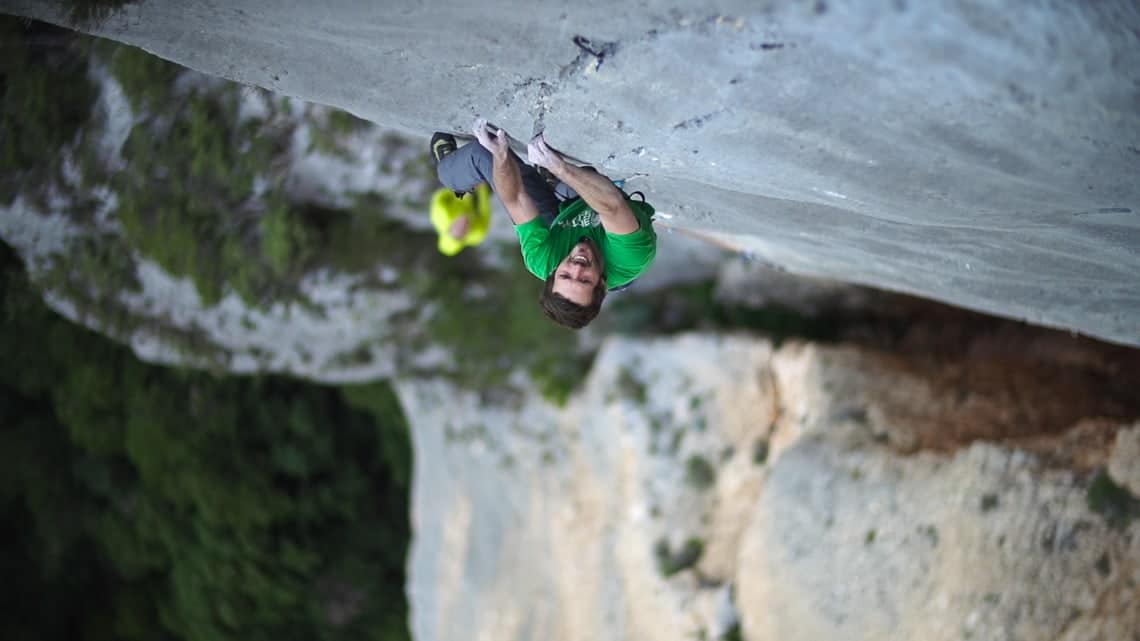
One figurehead of this movement is Patrick Edlinger, perhaps climbing’s first celebrity. Edlinger may not have established many significant first ascents in the Verdon, but he is certainly the area’s most famous emissary.
Charismatic, lean and muscular and with a shock of blond hair, Edlinger was featured in Jean-Paul Janssen’s documentary film “Vertical Opera.” This film and, later, “La Vie au bout des Doigts,” depicted Edlinger climbing in the Verdon both with and without a rope, footage that absolutely blew people away.
Edlinger was propelled to an uneasy stardom in the 1980s. He was featured, at age 24, in the magazine Paris Match as a “French person of the year” and photographed at the Paris Opera house alongside the actors Sophie Marceau and Gérard Depardieu.
His feats are legendary. He free soloed routes as hard as 8a+ (a level of difficulty that, back then, the best in the world could barely climb with a rope). One day Edlinger teamed up with friend Jacques Perrier and climbed 13 routes in the Verdon in a day: just over 8,000 feet of climbing.
Edlinger’s impeccable technique, honed on the sport climbs of the Verdon, was a sight to behold. He was the epitome of beautiful, flowing climbing movement. The sheer grace and ease with which he could ascend a blank-looking rock face was incomparable.
But more than his elegant prowess was his ability to articulate climbing as a lifestyle—as an almost spiritual pursuit. He compared climbing to yoga, and lived life ascetically. Edlinger was one of the world’s first and very best sport climbers, yet ironically, he was one of the first people to insist that climbing wasn’t a sport.
Climbing was a way of living.
“When I’m climbing rock,” he told Actuel magazine in 1981, “it’s like I’m talking to it. I’m courting it. There’s respect in the way I use the holds. It’s quiet; you’re alone. No one needs anything from me, I don’t ask anything of anyone. When you risk your life, your concentration has to be tenfold. You can’t afford to make a mistake.There is no feeling like it. When you’re on a big wall, you don’t eat much. You’re thirsty. It’s horrible. You’re going a long way, feeling like that. But when you’re finished, that first taste of water, it stays with you for hours. It’s important to keep life simple, because if your needs are great, you’ll never be satisfied.”
Yet for all the fame and adoration Edlinger enjoyed, he was also tortured by it. He stopped climbing and started drinking more. And his life ended in a tragedy in 2012, when he fell down his stairs and died in his home of La Palud sur Verdon leaving behind his wife and daughter.
To be in the Verdon in the 1980s was to be at ground zero for rock climbing in Europe. It was the place and time to be, a period in which you could find yourself surrounded by some of the most notorious and iconoclastic climbers of the day, leading visionaries who were really at the forefront of pushing both sport climbing and its limits of difficulty. Some of the most notable climbers were Patrick Edlinger, Patrick Berhault, Jean-Marc Troussier, François Lepron, Patrick Bestagno, Jerry Moffatt (U.K.), Ron Fawcett (U.K.), and Jean-Baptiste Tribout.
In America, Yosemite played a counterpart to the Verdon with a more trad-centric spin. Like the Verdon, Yosemite was also a ground zero for climbing.
Yet while Yosemite remains a significant location to this day, the Verdon lost its mantle to the many other limestone areas in Europe that may have had shorter and less intimidating cliffs but also much more accessible, steep rock.
By the 1990s, the vibrant climbing scene in the Verdon had dispersed. The campgrounds and bars of La Palud sur Verdon, once filled climbers, were now as empty as the walls themselves.
Just as climbers of the 1970s had once been drawn to look outside the vertical cracks to the blank faces for new challenges, 1990s-era sport climbers were seeking out even steeper caves and overhangs to find more challenges and continue pushing those limits of difficulty and athleticism.
The Verdon—once considered too steep and too blank to ever be climbed—had suddenly earned a reputation for not being steep enough to hold enough interesting challenges for the best climbers of the day.

A few local climbers remained in the Gorge, however, determined to prove that reputation wrong. Bruno Clément is one such climber who has dedicated most of his climbing life to the Verdon. Here he has personally installed over 500 routes in the Verdon, many of them being of a world-class degree of difficulty. More than anyone else, he has had both the vision and skill to look beyond the cracks, beyond that legendary bullet-blue vertical rock, and find new hard routes located on beautiful overhanging rock with unique “tufa” features: vertical columns of limestone that form by slow drips of water, like stalactites.
Bruno lives a quiet life with his two children in La Palud. He earns money working as a guide, but spends most of his time climbing and drilling bolts in new routes. Despite being one of the more prolific climbing developers of the last 20 years, few climbers have even heard of him.
Bruno has a gentle, taciturn demeanor and seems to prefer to shy away from the spotlight. He’s as stocky as a rugby player, with fingers as thick as sausages. But place this hulking mass of muscle on overhanging rock, and suddenly he belies his figure and moves with utter lightness and grace.
One of his most renowned first ascents is a route called Tom et Je Ris, a pun named after his son, Tom, who was born the same year that Bruno first climbed it, 15 years ago.
Tom et Je Ris is a 200-foot long pitch that climbs a steep, consistently overhanging tufa: a vertical column around which you can pinch your fingers, squeeze with your heels, and even find the most unlikely rests by pressing yourself against it in rather obscene positions.
This was the final big testpiece for Matt and Emily, who by now had learned a few things about how to navigate their way around the Verdon, and how to climb its legendary blue rock. Having begun on crack climbs like La Demande (1968), and working up to the world’s first sport route, Pichnibule (1976), they were now testing themselves on the hardest route of the trip: Tom et Je Ris.
They spent more time working on completing this climb than any other, which is hardly a simple matter of walking up to it, tying into the rope and giving it an effort. You have to hike 90 grueling minutes from the car to reach the rappel point. From here, you descend 200 feet down an overhanging wall, constantly kicking yourself out to create the momentum needed to swing back in so you don’t just find yourself dangling from the end of your rope helplessly in space. You reach a bolted anchor, 700 feet above the Verdon River as the Griffon Vultures circle around you.
Finally the climb begins.
Emily and Matt spent a couple of weeks working on completing this pitch without any falls. They needed to learn and memorize all the moves, and train their bodies to have the fitness needed to hang on for the whole ride. Exactly what sport climbing is all about.
And when they both succeeded on this route, you could tell. They were crazy psyched.
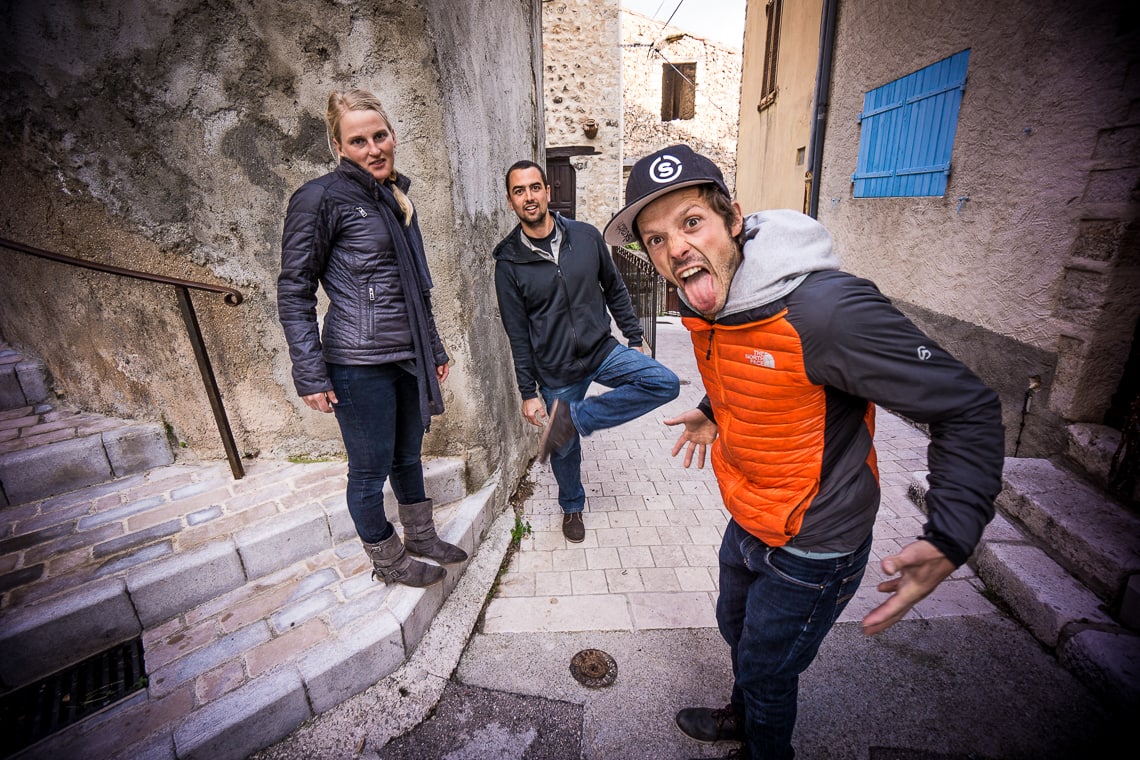
This trip was supported by National Geographic and The North Face.
All photos copyrighted by Keith Ladzinski. Check out more of his work at 3 Strings Productions.

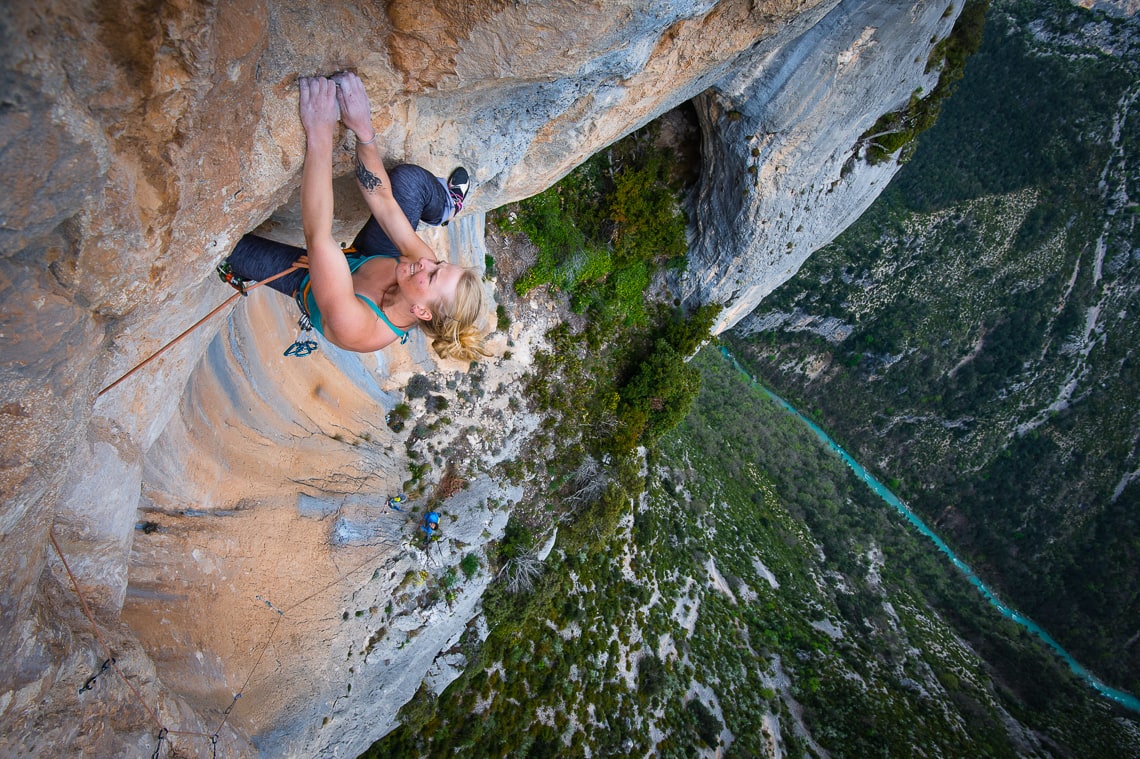


The stoke is high!
Great article and fantastic pictures. Loved it.
Inspiring piece! had to take a time out and track this one down:
https://youtu.be/CZlxY5rNGJk?list=PL7qFntCFHrAa27NYrlRsCZ0IG0dl73pl3
Wow, that story is amazing! I couldn’t stop reading it 😀
If you love climbing I recommend you to go to Ecuador.
I’m currently there and it is the adventure of my life!
The mountains here are perfect for climbing, you can even reach the summits of 6000mts high volcanoes if you’re motivated 🙂
My next step is the Cayambe volcano (5790mts) together with the tour operator Gulliver Expeditions, check them out, their tours are amazing.